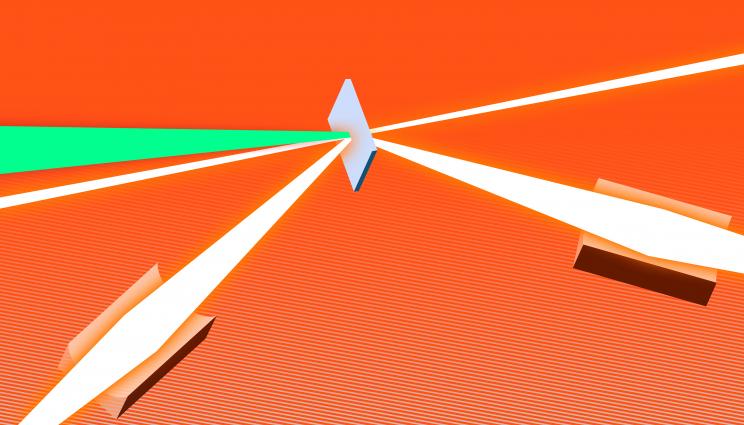
In a new experiment, four optical laser beams (green) launched a shock wave in a plastic sample made up of carbon and hydrogen. As the shock wave moved through the material, researchers observed it by hitting the shocked regions with X-ray photons from SLAC's Linac Coherent Light Source (thin white beam) that scattered both backward and forward off electrons in the sample (thicker white beams). Credit: Greg Stewart/SLAC National Accelerator Laboratory.
There are giants among us - gas and ice giants, to be specific. They orbit the same star, but their environmental conditions and chemical makeup are wildly different from those of Earth. These enormous planets - Jupiter, Saturn, Neptune and Uranus - can be seen as natural laboratories for the physics of matter at extreme temperatures and pressures.
Now, an international team including researchers from Lawrence Livermore National Laboratory (LLNL) has developed a new experimental setup to measure how chemical elements behave and mix deep inside icy giants, which could offer insights into the formation and evolution of planetary systems. What they learn could also guide scientists hoping to harness nuclear fusion, which produces conditions similar to those in our sun, as a new source of energy. Their results were recently published in Nature Communications.
Mixing it up
In previous experiments, researchers used SLAC's Linac Coherent Light Source (LCLS) X-ray laser to get the first detailed look at the creation of "warm dense matter," a super-hot, super-compressed mixture believed to be at the heart of these enormous planets. They also were able to collect evidence for "diamond rain," an exotic precipitation predicted to form from mixtures of elements deep inside icy giants.
Until now, researchers used a technique called X-ray diffraction to study this, taking a series of snapshots of how samples respond to laser-produced shock waves that mimic the extreme conditions found in other planets. This technique works well for crystal samples but is less effective for non-crystal samples whose molecules and atoms are arranged more randomly, which limits the depth of understanding scientists can reach. In this new paper, the team used a technique called X-ray Thomson scattering that precisely reproduces previous diffraction results while also allowing them to study how elements mix in non-crystal samples at extreme conditions.
"This research provides data on a phenomena that is very difficult to model computationally: the 'miscibility' of two elements, or how they combine when mixed," said LCLS Director Mike Dunne. "Here they see how two elements separate, like getting mayonnaise to separate back into oil and vinegar. What they learn could offer insight into a key way fusion fails, in which the inert shell of a capsule mixes in with the fusion fuel and contaminates it so that it doesn't burn."
10,000 kilometers deep
In this most recent experiment, optical laser beams launched a shock wave in a plastic sample made up of carbon and hydrogen. As the shock wave moved through the material, the researchers observed it by hitting the shocked regions with X-ray photons from LCLS that scattered both backward and forward off electrons in the sample.
"One set of scattered photons revealed the extreme temperatures and pressures reached in the sample, which mimic those found 10,000 kilometers beneath the surface of Uranus and Neptune," said SLAC scientist and co-author Eric Galtier. "The other revealed how the hydrogen and carbon atoms separated in response to these conditions."
Going deeper
The researchers hope the technique will allow them to measure the microscopic mix of materials used in fusion experiments at large, high-energy lasers such as LLNL's National Ignition Facility.
"We want to understand if this process could occur in inertial confinement fusion implosions with plastic ablator capsules, as it would generate fluctuations that could grow and degrade the implosion performance," said Tilo Doeppner, LLNL physicist and co-author on the paper.






